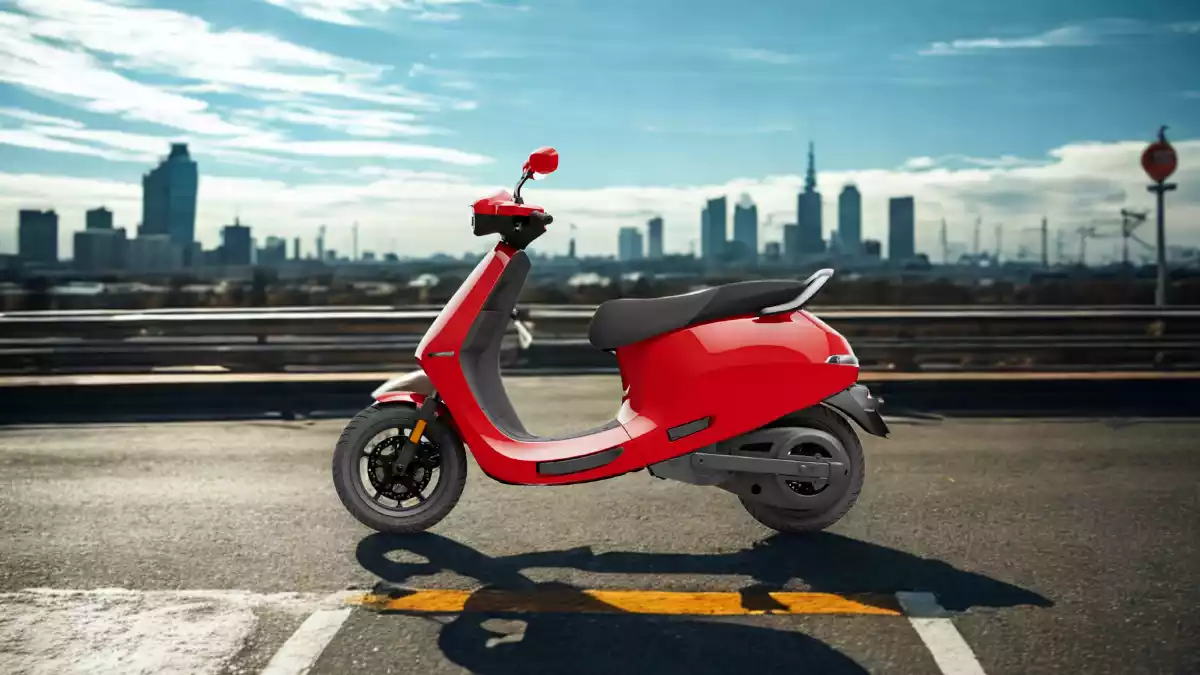If you are puzzled between the Yamaha FZ-X and the Bajaj Pulsar 150 and want to know which one suits you better, you’ve landed in the right place. As a bike expert with over 15 years of experience, I’ll walk you through how these two popular models really stack up in everyday riding situations, costs, and value for money. Whether it’s comfort, mileage, looks, or road presence, we’ll cover it all in a friendly chat style.
When you walk into a showroom or scroll through bikes online, it’s normal to be torn between these two. Both the Yamaha FZ-X and Bajaj Pulsar 150 are among the most trusted names for Indian riders. This blog aims to clear your doubts and give you practical knowledge—just as if you were speaking to a buddy who knows his bikes inside out.
Yamaha FZ-X vs Bajaj Pulsar 150 Design Comparison
The Yamaha FZ-X has a modern, muscular vibe with sharp edges and a high-set headlamp, which gives it a streetfighter appeal. Its aggressive stance and beefy fuel tank make it stand out in traffic. This styling appeals to younger riders who want something sporty yet urban-friendly. Meanwhile, the Bajaj Pulsar 150 carries the brand’s signature sporty style, but with a more traditional roadster look. It feels more classic and familiar to Indian riders who appreciate balanced proportions and less aggressive styling.
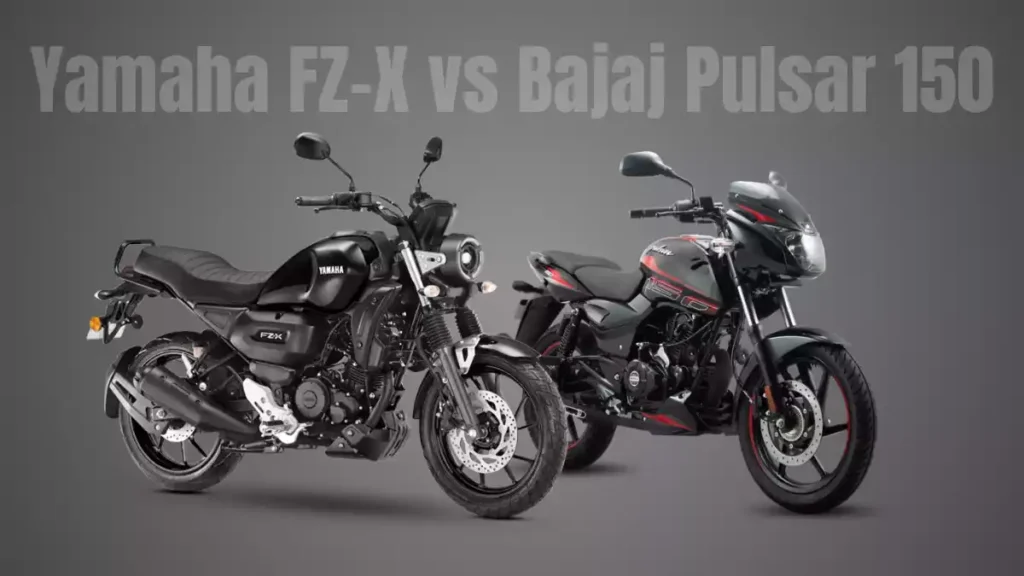
Both bikes have their charm, but if you want a fresh design that turns heads, the Yamaha FZ-X has the edge with its boldness. However, the Pulsar’s simple and functional design has stood the test of time and remains a trusted favorite for decades.
Yamaha FZ-X vs Bajaj Pulsar 150 Performance Comparison
Under the hood, the Yamaha FZ-X comes with a 149cc, air-cooled, fuel-injected engine that produces a refined 13.2 bhp and 13.6 Nm torque. It delivers smooth power suitable for city rides and occasional highway runs, making it ideal for relaxed cruising with enough poke for overtakes. On the other hand, the Bajaj Pulsar 150 packs a slightly higher output engine with a 149.5cc, oil-cooled setup, delivering roughly 14.1 bhp and 13.4 Nm torque. This setup offers a little more punch and is often favored by riders looking for a more spirited ride.
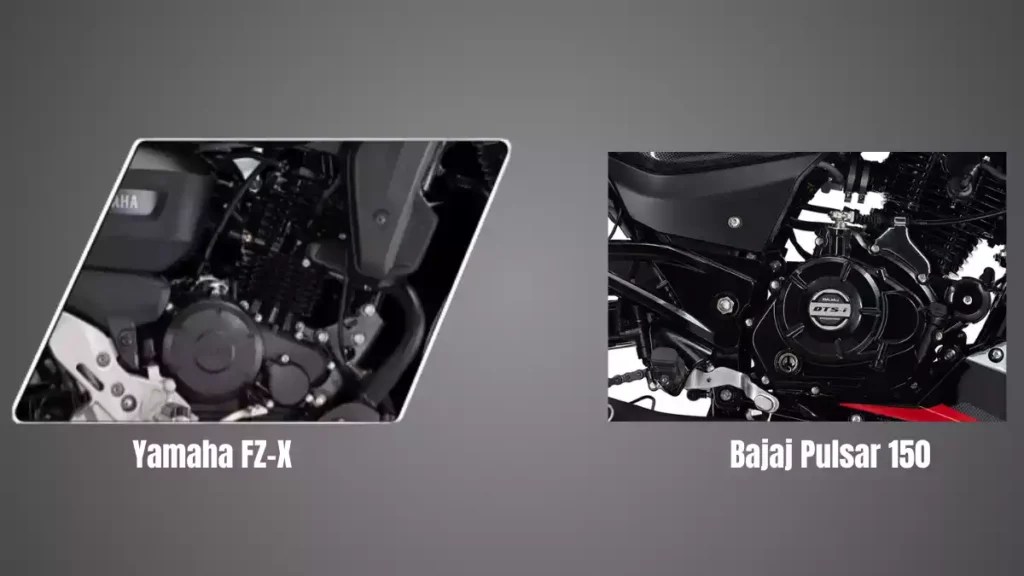
The Yamaha tends to be smoother and more refined, while the Pulsar trades a bit more noise and vibration for aggressive performance. For beginners or casual riders, the FZ-X feels extremely manageable, whereas Pulsar enthusiasts appreciate its street-smart vigor.
Yamaha FZ-X vs Bajaj Pulsar 150 Mileage Comparison
When it comes to mileage, the Bajaj Pulsar 150 often leads the pack with real-world figures hovering around 50-55 kmpl, making it a favorite among daily commuters. The air-cooled engine and light frame contribute to its fuel efficiency, especially in stop-and-go traffic. Meanwhile, the Yamaha FZ-X, despite its refined engine and fuel injection, delivers a slightly lower mileage, around 45-50 kmpl under similar conditions.
That said, the difference is not massive, and many riders find the Yamaha worth the trade-off for its smoother ride and modern tech. Both bikes offer respectable efficiency for the price and segment they compete in.
Yamaha FZ-X vs Bajaj Pulsar 150 Features Comparison
Feature-wise, the Yamaha FZ-X shines with added tech like LED headlamps, a fully digital instrument cluster with smartphone connectivity, and a mono-shock rear suspension which enhances ride quality. It also comes with a sleek design and a suicide clutch for smoother gear shifts.
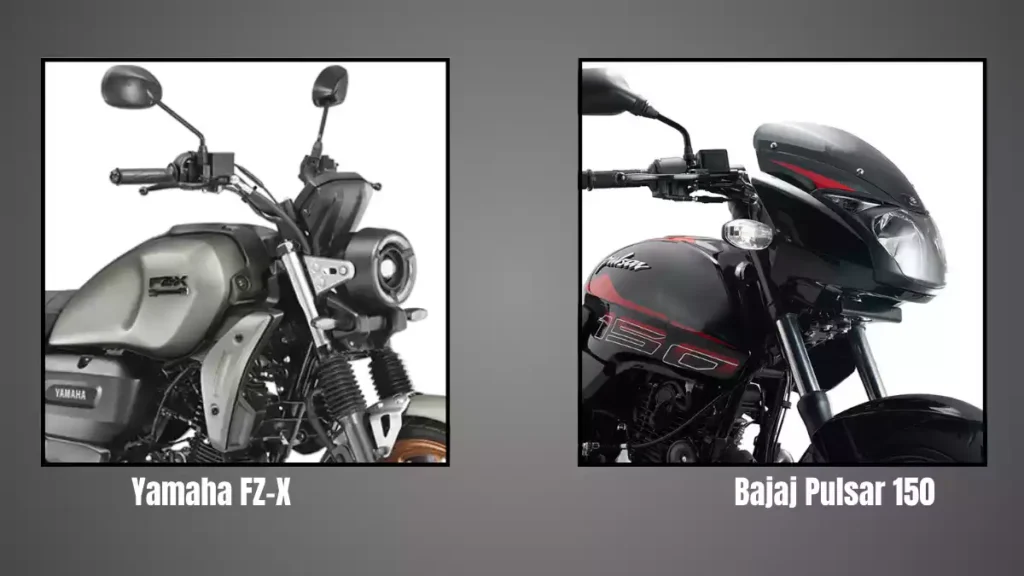
The Pulsar 150, while not as feature-loaded, holds its own with a mix of analogue and digital console, tubeless tyres, and twin shock absorbers at the rear that provide a firm ride. It has recently got updates like LED lights in some variants, balancing out the package for riders who want reliable performance without bells and whistles.
Yamaha FZ-X vs Bajaj Pulsar 150 Braking and Suspension
The Yamaha FZ-X offers better suspension with a Monoshock at the rear against Pulsar’s traditional twin shockers, resulting in more comfortable rides over bad patches or bumps on Indian roads. Both bikes feature front disc and rear drum brakes with dual-channel ABS as a standard safety feature, ensuring stable braking performance in city and highway traffic.
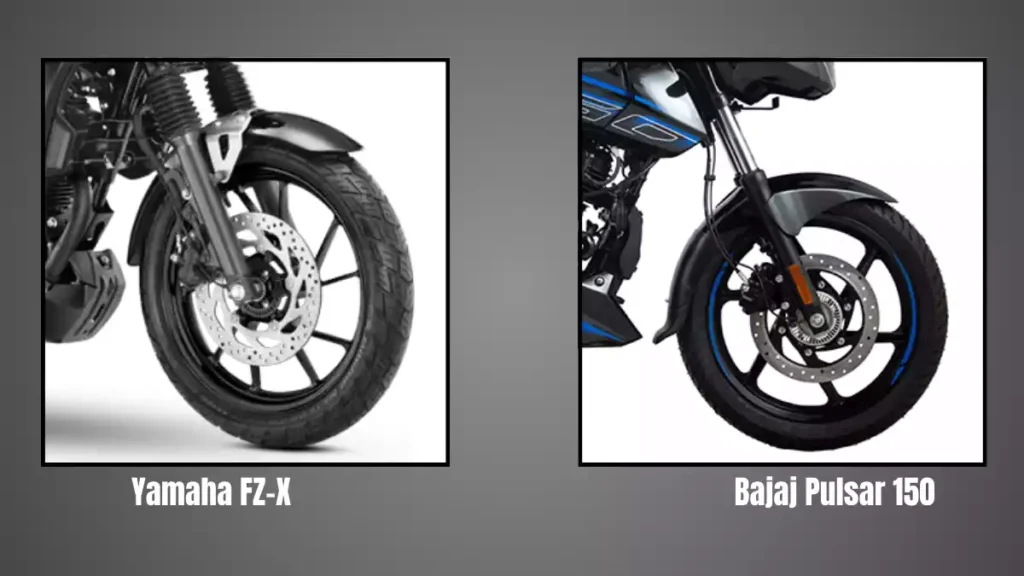
For sharp braking and handling, the Pulsar 150’s slightly more aggressive setup appeals to riders who often ride spiritedly, while the Yamaha’s suspension setup gives a more cushioned, easy-going feel suited for daily commuting and comfortable cruising.
Yamaha FZ-X vs Bajaj Pulsar 150 Price Comparison
Price is a big deciding factor! The Yamaha FZ-X generally carries a slightly higher price tag starting from around ₹1.30 lakh (ex-showroom) due to its modern features and styling. The Bajaj Pulsar 150 is more affordable, starting at about ₹1.10 lakh (ex-showroom), making it a go-to option for budget-conscious buyers.
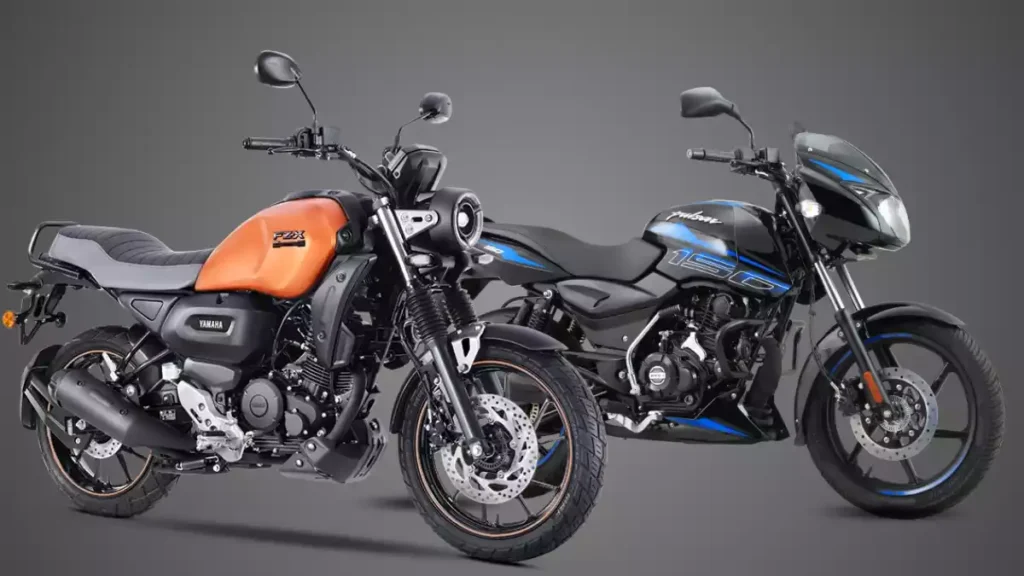
While the Yamaha asks for a bit more, its added features and premium feel justify the difference for those who want modern comforts and bold street presence. The Pulsar’s pricing and solid reliability have made it a market favorite for years, especially for those who want dependable performance without added frills.
Yamaha FZ-X vs Bajaj Pulsar 150 – Comparison Table
| Specification | Yamaha FZ-X | Bajaj Pulsar 150 |
|---|---|---|
| Engine | 149cc, Air-Cooled, Fuel-Injected | 149.5cc, Oil-Cooled |
| Power | 13.2 bhp | 14.1 bhp |
| Torque | 13.6 Nm | 13.4 Nm |
| Mileage (Real-World) | 45-50 kmpl | 50-55 kmpl |
| Suspension (Rear) | Mono-Shock | Twin Shock |
| Brakes | Disc+Drum, Dual Channel ABS | Disc+Drum, Dual Channel ABS |
| Instrument Console | Fully Digital | Analog + Digital |
| Price (Ex-Showroom) | ₹1.30 lakh approx. | ₹1.10 lakh approx. |
Conclusion – Yamaha FZ-X vs Bajaj Pulsar 150: Which One is Worth Buying?
Between the Yamaha FZ-X and Bajaj Pulsar 150, your choice comes down to your riding style and daily needs. If you want a truly modern look, advanced tech features, and a superbly comfortable ride, the FZ-X is a fantastic upgrade—especially for commuters in big cities or anyone who loves stylish, smooth rides. On the other hand, if you value tried-and-tested reliability, fuel efficiency, and a pocket-friendly price, the Pulsar 150 keeps things classic with solid performance decade after decade.
Both bikes have a strong place in the Indian market, and you won’t go wrong with either one. Test ride both to see which one feels right and fits your lifestyle—and remember, the best bike is the one that makes you want to ride every day!
Hope this comparison helped you in your decision! Have more questions? Drop a comment and stay tuned to IndianGadi.com for more smart, rider-focused bike advice—always explained in a way you understand.
Yamaha FZ-X vs Bajaj Pulsar 150 – FAQs
Which bike has better mileage?
The Bajaj Pulsar 150 generally offers better mileage around 50-55 kmpl compared to the Yamaha FZ-X’s 45-50 kmpl.
Is the Yamaha FZ-X good for beginners?
Yes, the FZ-X is smooth and easy to ride, making it ideal for beginners and city commuters.
Does the Bajaj Pulsar 150 have ABS?
Yes, dual-channel ABS is standard on Pulsar 150 models.
How do these bikes compare in comfort?
The Yamaha FZ-X’s mono-shock suspension offers a cushier ride, while the Pulsar’s twin shocks provide a firmer feel ideal for spirited riding.
Which bike offers better features for the price?
The Yamaha FZ-X offers more modern features including a fully digital console and LED lights, justifying its higher price.







